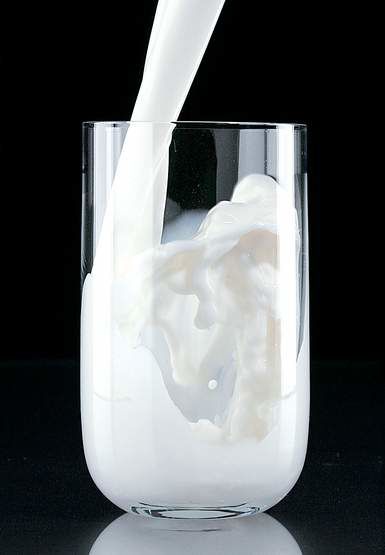Questions (and answers) on new vitamin D advice
Published 4:00 am Thursday, December 23, 2010

- Many foods are fortified with vitamin D, including milk.
A recent vitamin D report from the Institute of Medicine forced a lot of people to reconsider the essential nutrient. Here’s a look at what the expert panel said, and why it reached its controversial conclusions.
How much vitamin D did the experts say is necessary?
For most children, teens and adults, a daily dose of 400 international units (IUs) of the vitamin is sufficient, and 600 IUs are recommended. Seniors older than 70 should ideally receive 800 IUs of vitamin D a day, the panel determined. For babies younger than 1, the panel considered 400 IUs of vitamin D enough.
Those levels are somewhat higher than the ones set in 1997, the last time a government panel examined vitamin D intake. But they are far below what many doctors and supplement advocates had been urging.
Why weren’t they higher?
The idea that people could benefit from daily doses as high as 2,000 IUs is based on the belief that vitamin D can reduce the risk of many chronic diseases, including Type 2 diabetes, cardiovascular disease, metabolic disturbances, depression and certain cancers.
A slew of recent studies has linked low levels of vitamin D to an increased incidence of these health problems. But the expert panel concluded that the studies were not convincing — many, in fact, showed no such connection — so it based its recommendations only on the amount of vitamin D needed to maintain bone health and prevent fractures.
Does that mean I should give up my vitamin D supplements?
Maintaining a healthy level of vitamin D through diet alone has become much easier since manufacturers began fortifying foods with the nutrient. Fortified foods — including virtually all milk, many brands of orange juice, and some cheeses, yogurts, margarines and breakfast cereals — are now some of the richest dietary sources of vitamin D. High levels exist naturally in fatty fish such as tuna, salmon and mackerel, and it’s also present in egg yolks and beef liver.
But there are a lot of people who may still need to add a vitamin D pill to their daily diet. For instance, people who follow a vegan diet need to look hard for supplemental sources of vitamin D, as do those with milk allergies, lactose intolerance, and people who rarely eat fish.
“We didn’t actually say in the report that supplementation is verboten,” said Dr. Glenville Jones, an endocrinologist at the University of Queensland in Canada who was on the expert panel.
So I should keep on buying foods fortified with vitamin D?
Definitely, says Katherine Tallmadge, a registered nutritionist and spokeswoman for the American Dietetic Association, which endorsed the panel’s report. In fact, the fortification of foods probably contributed significantly to the panel’s finding that most North Americans get enough of the nutrient, even as they raised the recommended daily levels.
Can’t I get some of the vitamin D I need from the sun?
Indeed, the sun is a free, plentiful source of vitamin D. When the sun shines on human skin for at least five to 15 minutes, the body produces the nutrient. But with people spending more time indoors and using sunscreen to prevent skin cancer, this source has fallen on hard times. In fact, the panel didn’t even factor in vitamin D from sun exposure when it made its recommendations.
Does that mean I should lay off the sunscreen?
The sun can be a powerful manufacturer of the nutrient: In 15 minutes, a light-skinned person wearing a bathing suit outside in early July will produce 15,000 to 20,000 IUs of vitamin D.
The body stores excess vitamin D in fat, and some research suggests that it is released as needed. But there’s debate about how well that happens, so the panel members suggest that daily dosing of vitamin D is a better bet.
Besides, even 15 minutes without sunscreen won’t fly with dermatologists. They warn that prolonged exposure to ultraviolet light — either from the sun or in a tanning booth — elevates a person’s risk of developing melanoma, the deadliest form of skin cancer. So, by all means, slather on that sunscreen.
Are there any groups of people for whom the need for vitamin D supplementation is likely to be higher?
Though the institute’s report assumed away the sun as a source of Vitamin D, it acknowledged that “incidental exposure” plays a role in propping up everybody’s levels of the nutrient. For the elderly, that added buffer is largely lost. So among healthy people, those older than 70 need to take in more vitamin D.
Breast milk is not a source of vitamin D, so breastfed babies — particularly those who are dark-skinned — should be considered candidates for supplementation from the first week of life. Formula is typically fortified with vitamin D.
Some prescription medications, including the anti-seizure drugs Phenobarbital, Dilantin and Tegretol, appear to depress levels of circulating vitamin D, suggesting that some people with epilepsy should consider supplementation. Diuretics called thiazides, which are used to treat high blood pressure and kidney stones, can increase levels of vitamin D in the bloodstream.
I was told I was deficient in vitamin D. Is it true?
Vitamin D deficiency has been defined and tested in widely varying ways. Lab tests for the nutrient have different standards, different methods and sometimes test for different indicators of vitamin D deficiency.
So the first things to ask are: Who said you were deficient, and what measure did they use? Physicians and dietitians reading the IOM report’s specialized appendices may be reconsidering what constitutes sufficiency in the coming months.
Is there such a thing as too much vitamin D?
The expert panel’s comprehensive report is unlikely to lay this question to rest, although its advice was clear: Taking more than 4,000 IUs of vitamin D a day is risky. Too much Vitamin D can cause kidney stones and hypercalcemia, which in turn can lead to headaches, anxiety, depression, fatigue, stomach pain, cardiac arrhythmia, muscle weakness, aches, pains and fractures. Daily doses above 10,000 IUs a day are known to cause tissue and kidney damage, the panel said.
In thinking about the safe upper limit that the panel proposed, keep in mind that the experts were looking for the amount needed by healthy people to maintain their bones. The panel wasn’t convinced that higher levels of vitamin D could prevent or treat other diseases, so it had little tolerance for the risks associated with mega-doses.






